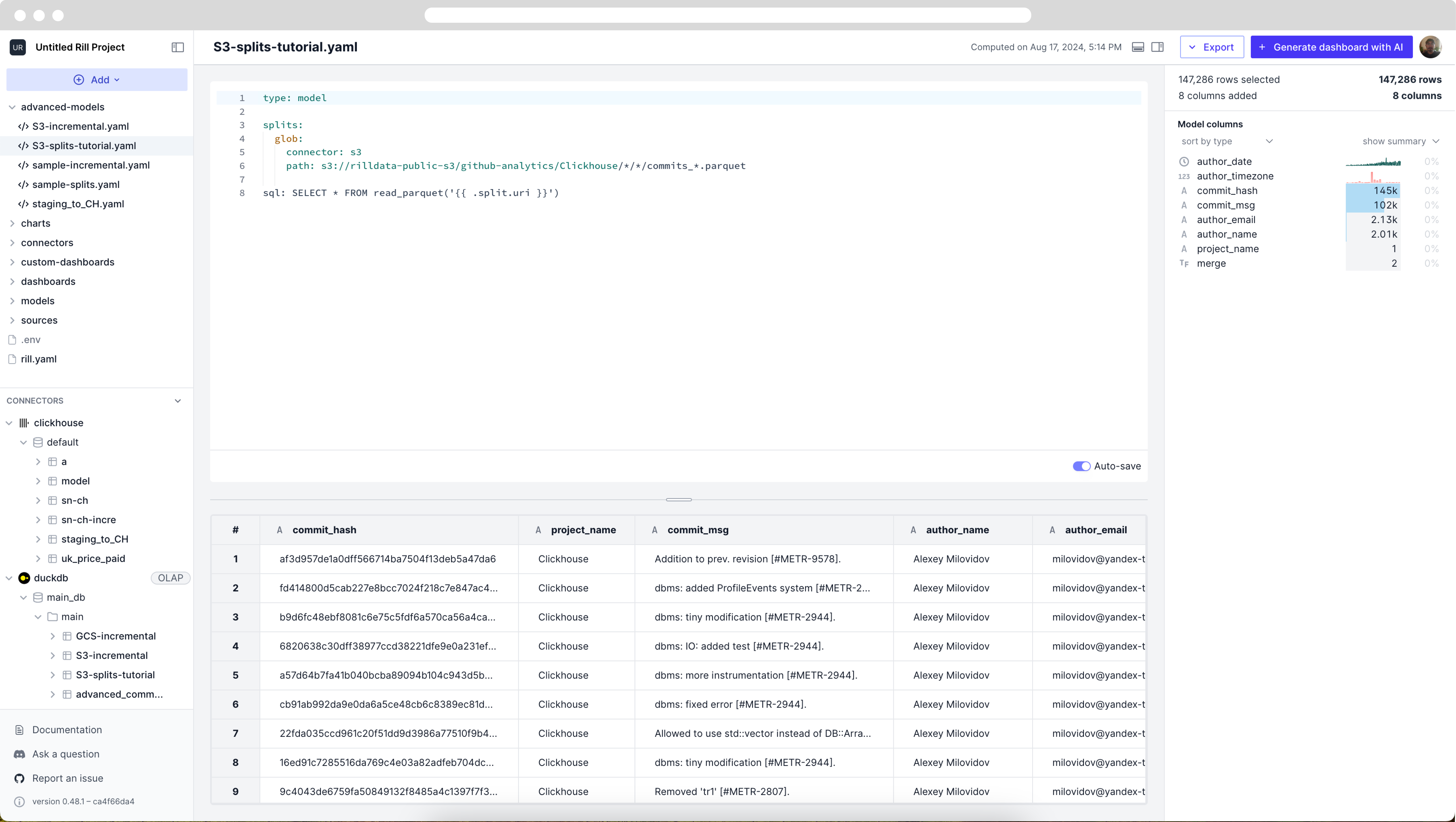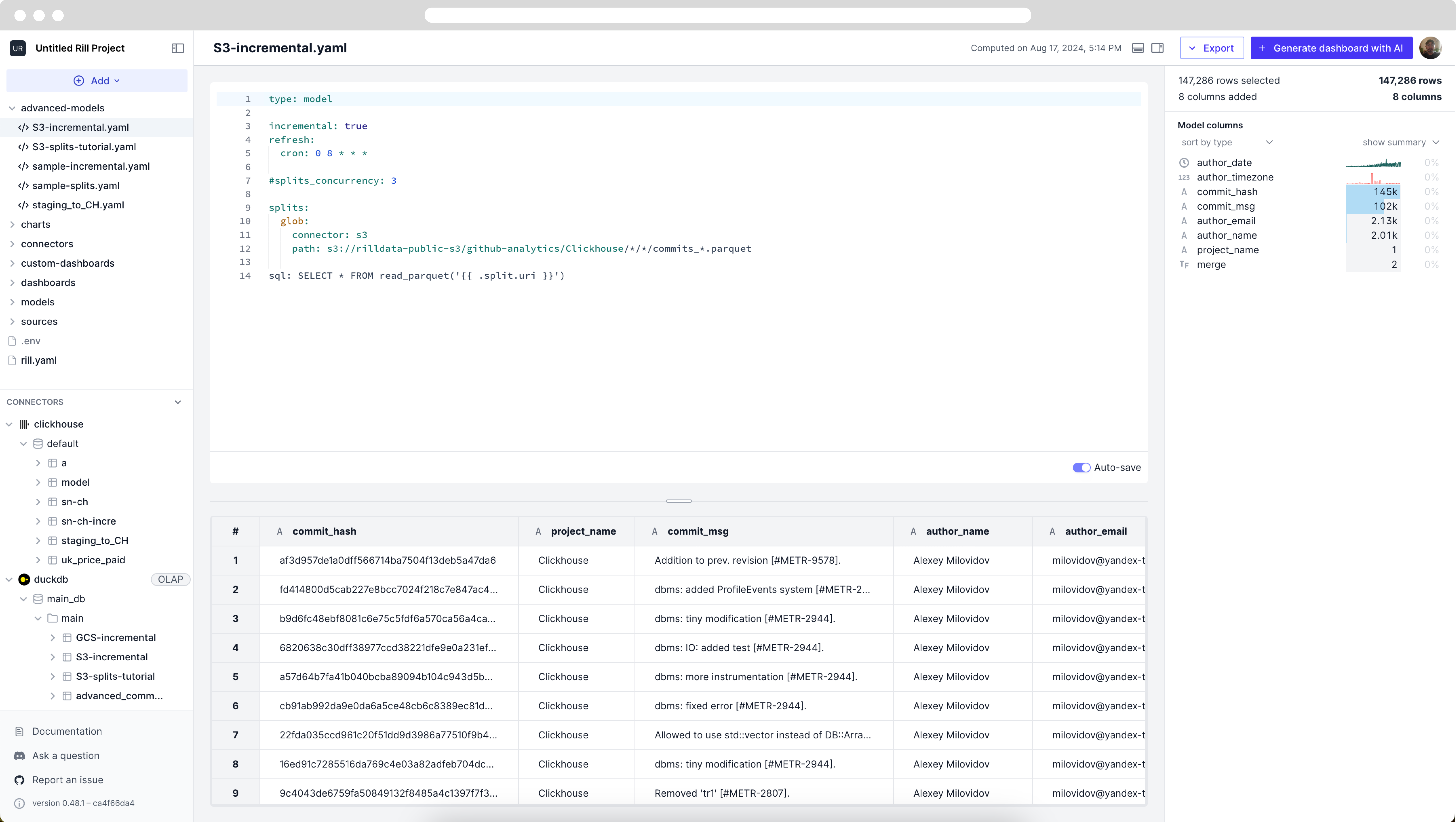Splits with Cloud Storage
Another advanced concept within Rill is using Incremental Models. To understand incremental models, we will also need to discuss splits.
Understanding Splits in Models
Here’s how it works at a high level:
- Split Definition: Each row from the result set becomes one "split". The model processes each split separately.
- Execution Strategy:
- First Split: Runs without incremental processing.
- Subsequent Splits: Run incrementally, following the output connector's
incremental_strategy(either append or merge for SQL connectors).
Let's create a basic split model.
In the previous courses, we used a GCS connection to import ClickHouse's repository commit history. In this guide, we will use S3. The format of the files are the same, you just need to change gs to s3
s3://rilldata-public/github-analytics/Clickhouse/*/*/commits_*.parquet
-
Create a YAML file:
S3-splits-tutorial.yaml -
Use
glob:resolver to load files from S3
splits:
glob:
connector: s3
path: s3://rilldata-public/github-analytics/Clickhouse/*/*/commits_*.parquet
- Set the SQL statement to user the URI.
sql: SELECT * FROM read_parquet('{{ .split.uri }}')
Handling errors in splits
If you see any errors in the UI regarding split, you may need to check the status. You can do this via the CLI running:
rill project splits --<model_name> --local
Once completed you should see the following:

Refreshing Splits
Let's say a specific split in your model had some formatting issues. After fixing the data, you would need to find the key for the split and run rill project splits --<model_name> --local. Once found, you can run the following command that will only refresh the specific split, instead of the whole model.
rill project refresh --model <model_name> --split <split_key>
What is Incremental Modeling?
Once splits are setup, you can use incremental modeling to load only new data when refreshing a dataset. This becomes important when your data is large and it does not make sense to reload all the data when trying to ingest new data.
Let's modify the split model to add incremental modeling.
-
Set
incrementalto true -
You can manually setup a
splits_watermarkbut since our data is using theglobkey, it is automatically set to theupdated_onfield. -
Let's set up a
refreshbased oncronthat runs daily at 8AM UTC.
refresh:
cron: "0 8 * * *"
Once Rill ingests the data, your UI should looks something like this:

Your YAML should look like the following:
type: model
incremental: true
refresh:
cron: 0 8 * * *
splits:
glob:
connector: s3
path: s3://rilldata-public/github-analytics/Clickhouse/*/*/commits_*.parquet
sql: SELECT * FROM read_parquet('{{ .split.uri }}')
You now have a working incremental model that refreshed new data based on the updated_on key at 8AM UTC everyday. Along with writing to the default OLAP engine, DuckDB, we have also added some features to use staging tables for connectors that do not have direct read/write capabilities.
Was this content helpful?